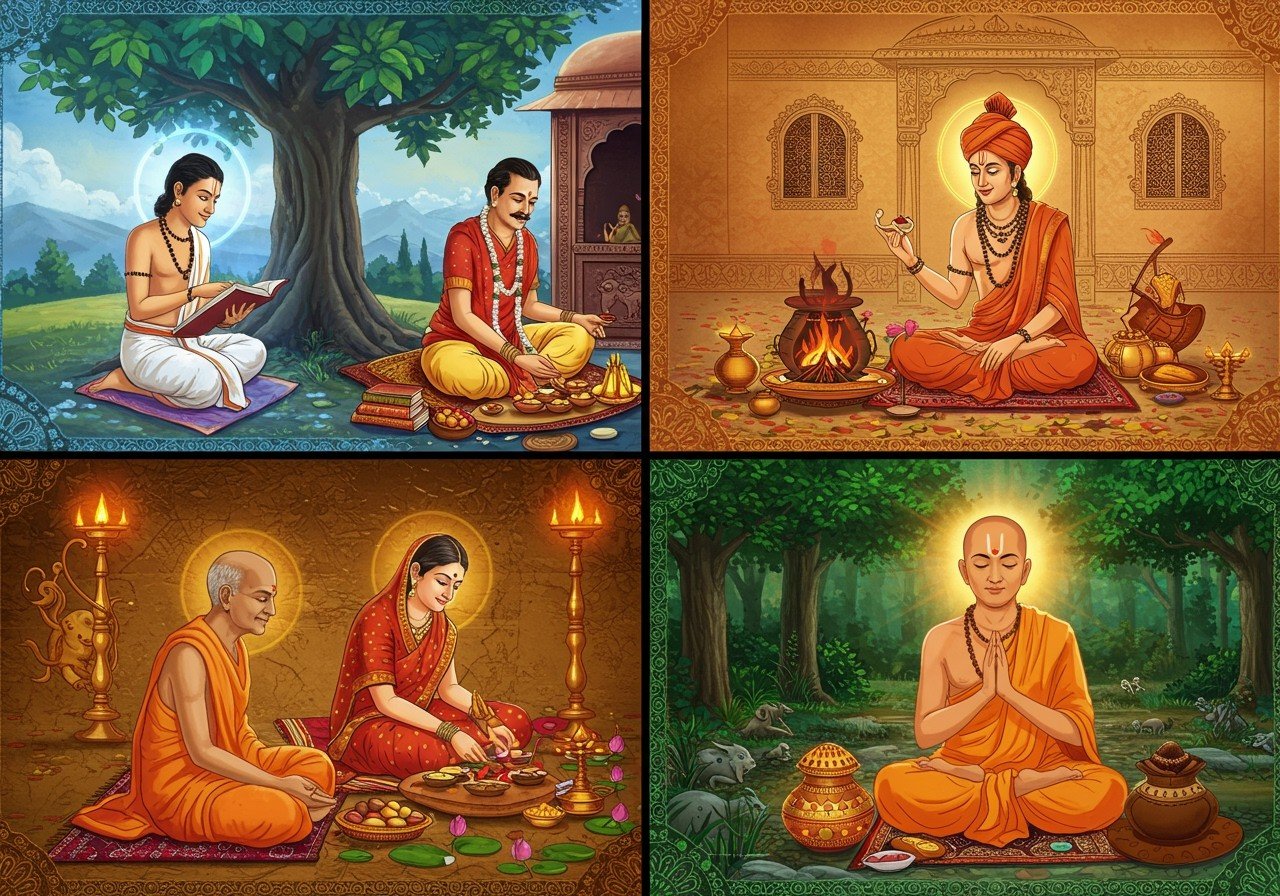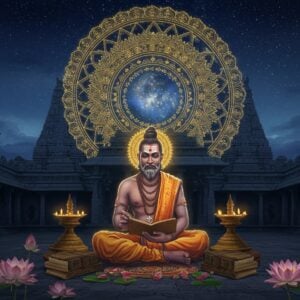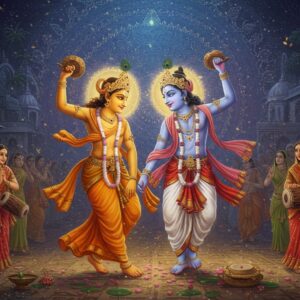
Hindu philosophy provides a profound roadmap for life’s journey through the concept of the four Ashramas: Brahmacharya, Grihastha, Vanaprastha, and Sanyasa. These stages are not merely sequential; they represent a structured path for spiritual evolution and personal fulfillment. They are deeply intertwined with the four aims of life – Dharma (righteous conduct), Artha (material prosperity), Kama (pleasure and desires), and Moksha (liberation).
Brahmacharya: The Stage of Learning and Self-Discipline
Brahmacharya, the first Ashrama, emphasizes learning and self-cultivation. Traditionally beginning around age seven, this stage involves dedicating oneself to education under the guidance of a Guru. It involves studying sacred texts like the Vedas and Upanishads. This period cultivates self-control, discipline, and celibacy, allowing for focused learning and character development, laying a solid foundation for future stages. Discover more about Hindu scriptures and their significance. This stage fosters a deep understanding of Dharma, preparing individuals for the responsibilities to come. You can explore a collection of sacred threads (Janeu) for Upanayana ceremonies, study materials like the Bhagavad Gita, and traditional prayer beads at Poojn.in.
Grihastha: The Stage of Family and Social Responsibility
Grihastha marks the commencement of family life. This stage involves marriage, raising children, and actively participating in society. It’s a period of building a home, pursuing a career, and fulfilling social obligations. Individuals strive for Artha and Kama while adhering to Dharma, balancing personal desires with responsibilities to family and community. Learn more about Hindu traditions and family values. Grihastha is a vital stage for societal stability and economic growth. Poojn.in offers various products for this stage, from complete puja sets for daily worship to havan and yajna materials and festival-specific items. Browse our collection at Poojn.in.
Vanaprastha: The Stage of Retreat and Reflection
Vanaprastha signifies a gradual withdrawal from worldly affairs. As responsibilities lessen, individuals transition towards introspection and spiritual pursuits. This stage often involves retiring from active work and dedicating more time to meditation, prayer, and self-reflection. Plan a spiritual retreat with our ashram stay guide. Vanaprastha isn’t about complete renunciation but preparation for the final stage, Sanyasa. It involves detaching from material possessions and focusing on inner growth. Find meditation accessories, prayer beads (mala), and spiritual books to aid your journey at Poojn.in.
Sanyasa: The Stage of Renunciation and Liberation
Sanyasa is the final Ashrama, dedicated to the pursuit of Moksha, or liberation. This stage involves renouncing all worldly attachments and dedicating oneself entirely to spiritual practices. Individuals often detach from family and social obligations, living a simple life focused on meditation and self-realization. Sanyasa represents the culmination of one’s spiritual journey, seeking union with the divine. Poojn.in provides basic prayer items, meditation cushions, and spiritual texts for those embarking on this path. Explore the ancient wisdom of the Vedas.
The Ashramas in Modern Life
While the traditional structure of the Ashramas might not be directly applicable to modern lifestyles, their underlying principles remain relevant. These stages offer valuable insights into personal growth, self-discovery, and balancing worldly duties with spiritual aspirations. They provide a framework for navigating life’s complexities with purpose and meaning. Discover how Yoga and Ayurveda can enhance your well-being.
The four Ashramas offer a timeless guide for navigating the journey of life, emphasizing the importance of balance, growth, and the pursuit of spiritual fulfillment.


